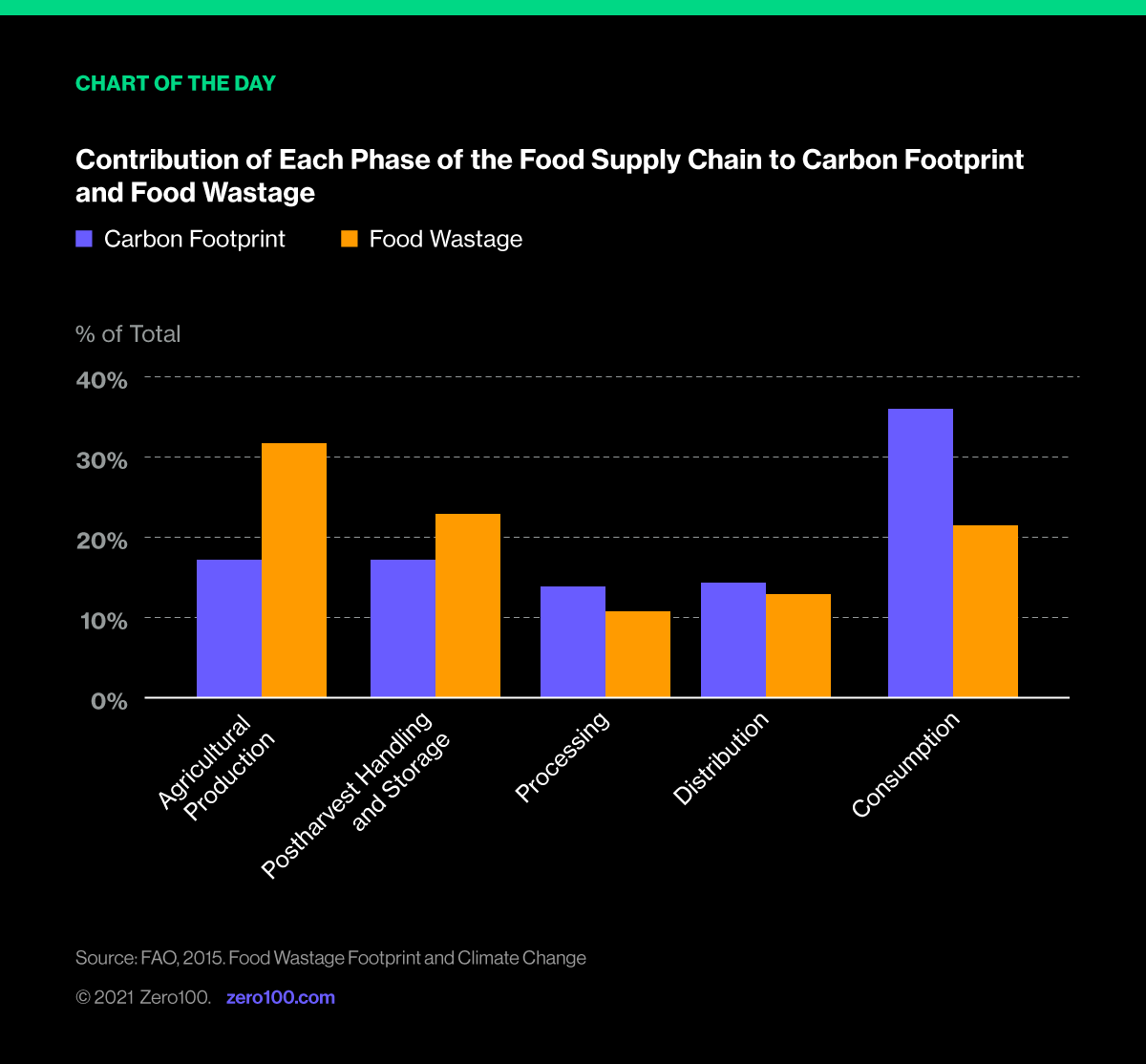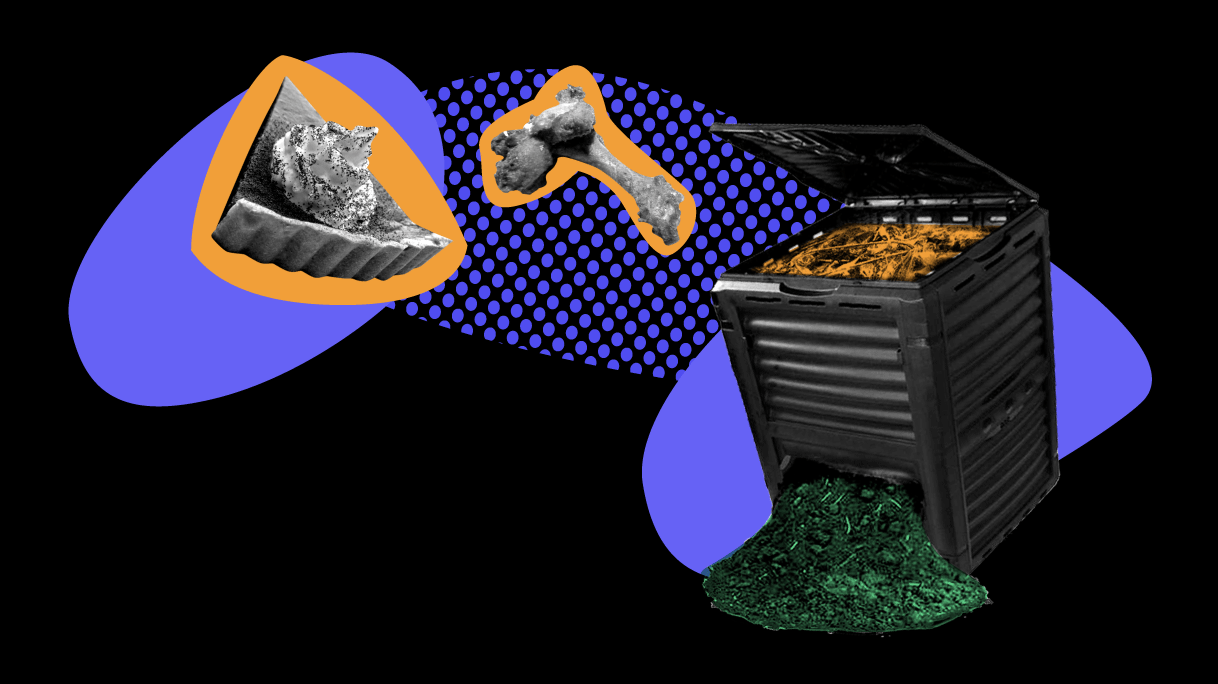This week in kitchens across America, creativity is at its peak as families aim to use up Thanksgiving Turkey, veg, stuffing, potatoes and desserts in sandwiches, stews, pancakes and - yes – milkshakes.
We've all experienced the forgotten item in the fridge or pantry that inevitably goes bad over the days, week, months, (or, gulp) years of... placement. It turns out, something similar happens at an industrial level.
40% of all food in America is wasted. Food production and its waste contributes an enormous amount of carbon into the air around us – food supply chains contribute 25% of the world's carbon emissions but have not been a focus of late.
This week, we discover what can be learned from causes of carbon from food waste that can be inspiration for other industries.
Quality Issues Cause Carbon Emissions
25% of food-based emissions come from food that is never used due to quality issues (looking “ugly”) or surplus production, according to San Francisco-based Imperfect Foods, a reimagined grocery delivery service that matches unwanted, “ugly” produce with consumers – saving over 50 million pounds of produce from landfill in 2020.
Too Good To Go is a tech-for-good company behind the world's #1 marketplace for surplus food. They connect food providers with those in need to balance food inequity and fight food waste.
As supply chains dial up efforts to track their Scope 1, 2, and 3 emissions, the carbon impact from failed quality has a role to play. While a quality escape will never make it to the customer, the carbon impacts of that quality escape should be documented eliminated or offset.
Planned Byproduct Cause Carbon Emissions
Consider the process of making coffee or corn. Coffee beans are roasted, ground, combined with hot water and... disposed. Corn is grown, the very top of the stalk is used and the rest is... disposed.
Start-ups are working to address this. Bio-bean turns coffee grounds into useful commodities such as plastics made from coffee. And that agriculture byproduct can be created into packaging using Ecovative's mycelium line that competes with packaging made from fossil fuels by using agriculture byproduct and mushrooms.
As byproduct leaves our value streams, we can capture the carbon implications of this value departure. Hard-earned digital twins show us byproducts, its weight and frequency, and its emissions. Supply chains can leverage materials marketplaces to share this data and be paired with a buyer to use the material and put the emissions to use.
Waste Cause Carbon Emissions
The saddest part of the food journey is the amount of food that is never given a chance to be eaten. 10% of global carbon emissions come from food that was never used. The entire supply chain has, in essence, been wasted as well.
Emissions are made worse because most of this food is not composted, which allows oxygen to mix with the food waste. Instead, food that joins landfill is buried and does not receive oxygen, so it produces methane.
60% of the food waste problem happens in households. UNEP finds this to be broadly similar across country income groups making this a universal concern.
Food Cloud works to combat food waste by connecting businesses with charities. Goodr aims to eliminate food waste by reducing waste and providing food recycling options for households, to keep uneaten foods out of landfill.
What a Waste 2.0 from the World Bank shows that while about half the waste produced each year is food or green, the other half is made up of various materials. Outside of food, online returns are often binned instead of restocked. As lifecycle analyses move from static to live and dynamic, supply chains will have better data on how their products are used – or not.
New Technologies for New Solutions
Last month, the Wall Street Journal profiled several start-ups tackling food waste with technology. While food remains a unique supply chain with challenges to overcome, the learnings from the causes of carbon and other emissions from food supply chains give us hints for starting points to find the pear-fect innovation in our own supply chains.

Critical Reading
FAST COMPANY
ESG investing has a sustainability blind spot: supply chains
Commentary: This $35 trillion industry sees expansion opps through doubling down on supply chain.
#money
ROLL CALL
Bill would create database to address supply chain crisis
Commentary: Supply chain continues as the sweetheart of lawmakers.
#supplychainpolicy
BLOOMBERG
When Shipping Containers Are Abandoned, the Cargo Becomes a Mystery Prize
Commentary: If your inventory is low for holiday shoppers, try your luck at the industrial version of a mystery grab-bag.
#thrifting
